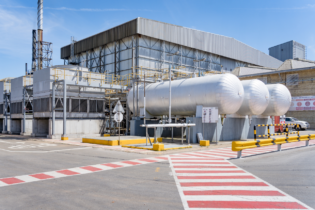Truly sustainable construction can only take place where concrete is manufactured with sand and stone that is procured through registered legal entities. All too often sand and stone is overlooked by green building practitioners, yet it constitutes by far the biggest component of any concrete construction work.
By volume sand and stone makes up by far the biggest percentage of the dry mix of concrete and it is vitally important that a paper-trail be followed to ensure the materials are obtained from legal mining operations. Concrete suppliers should be able to prove the supplying mine is operating with a valid mining licence from the Department of Mineral Resources (DMR), has land-use rights from the local, provincial and national authorities, as well as complying with all relevant environmental protection requirements. According to Nico Pienaar, director of the Aggregate and Sand Producers Association of Southern Africa (Aspasa), illegal mining practices continue to scar our landscapes and diminish the lives of surrounding communities and others that are affected by the practice. He urges all involved in sustainable and green building projects to make use of aggregates from legal and environmentally conscious companies who are active Aspasa members.“Building professionals should also remember that unscrupulously operated pits and quarries scar the environments and contaminate water courses. Damage in these cases is most often left for future generations to clean up. That is why mines and quarries belonging to Aspasa have thrown their full weight behind programs to help protect the environment upfront and adopt sustainable mining practices in their everyday operations.
“Increasing environmental awareness has prompted our members to lead by example and adopt a comprehensive “About Face” program which guides the association on best practices and legislation governing the industry. It also requires members to implement the association’s own set of environmental standards and guidelines. Regular audits ensure members comply with the association’s requirements and scores are assigned to quarries to provide an overview of the operation’s performance. “Furthermore, the audits benchmark operations against all other participating quarries to provide a snapshot of the entire industry’s performance against environmental regulations and guidelines. The Department of Mineral Affairs may also use the information for future mining licence decisions,” explains Pienaar.







